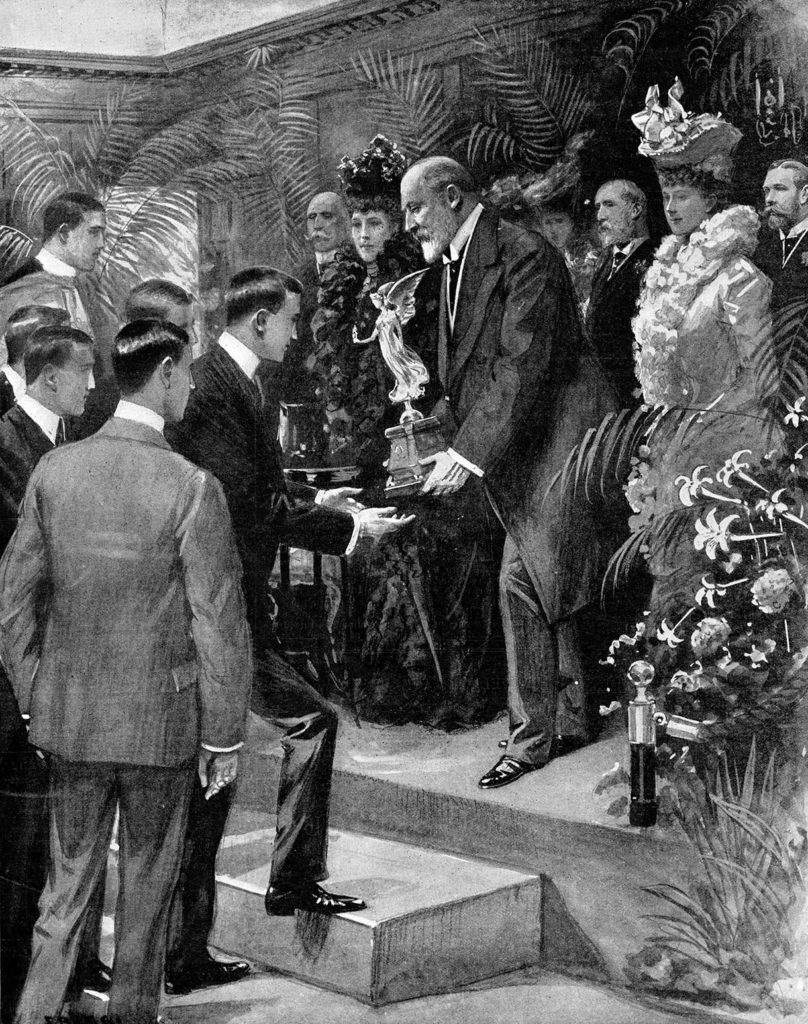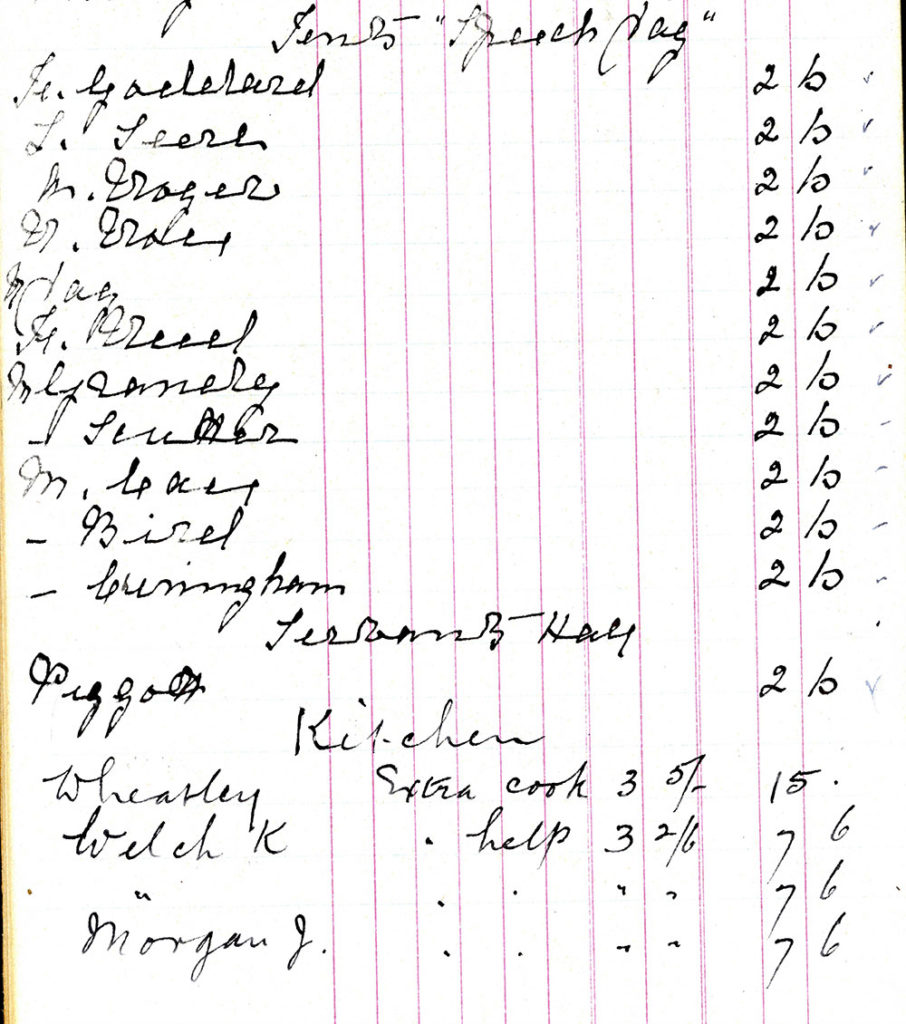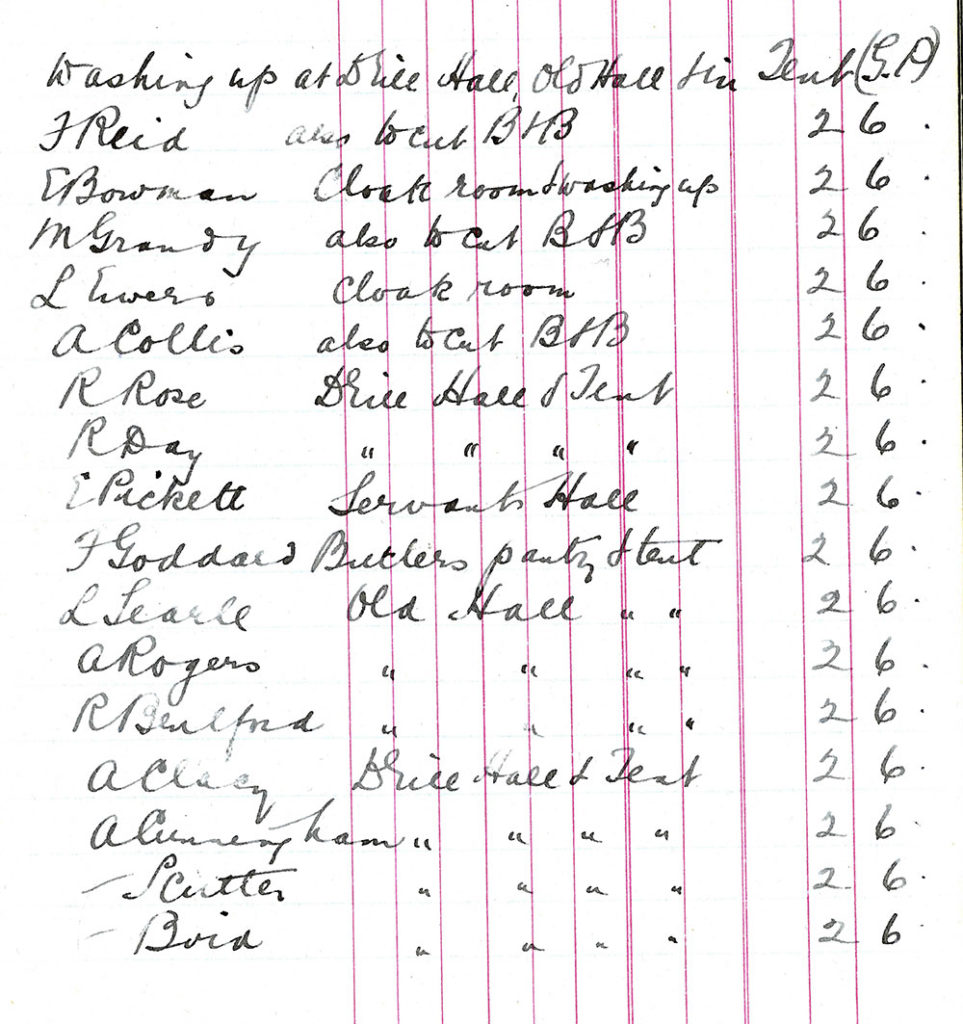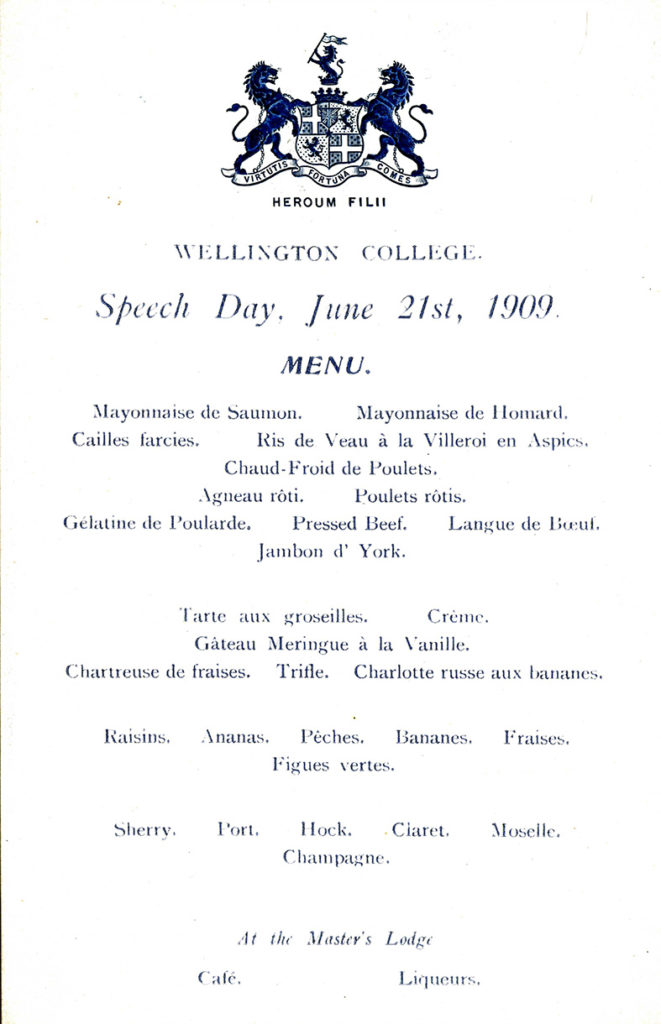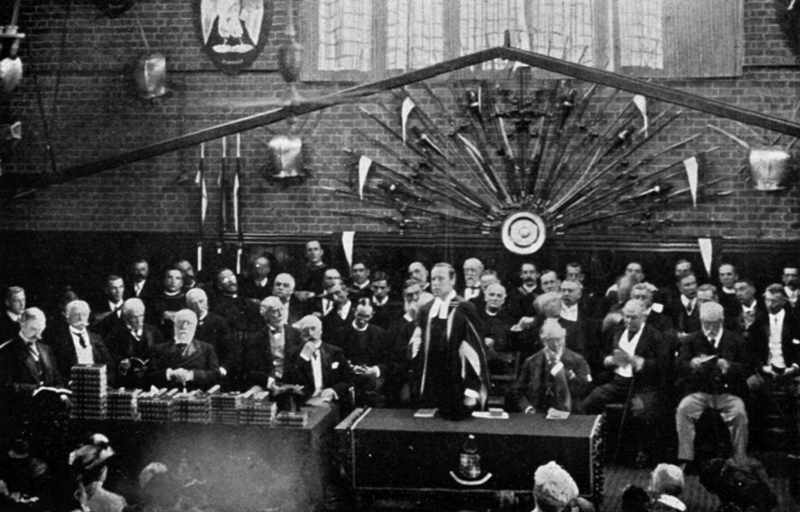Golden Age
Under Bertram Pollock, Master of Wellington from 1893 to 1910, Speech Day became a glittering event. Pollock had a gift for what he himself called ‘snobbery’, shamelessly courting and flattering the royalty and nobility of the day. King Edward VII, a frequent visitor while Prince of Wales, attended Speech Day as King on three occasions, in 1904, 1907 and 1909. He remains the only reigning monarch to have visited on Speech Day.
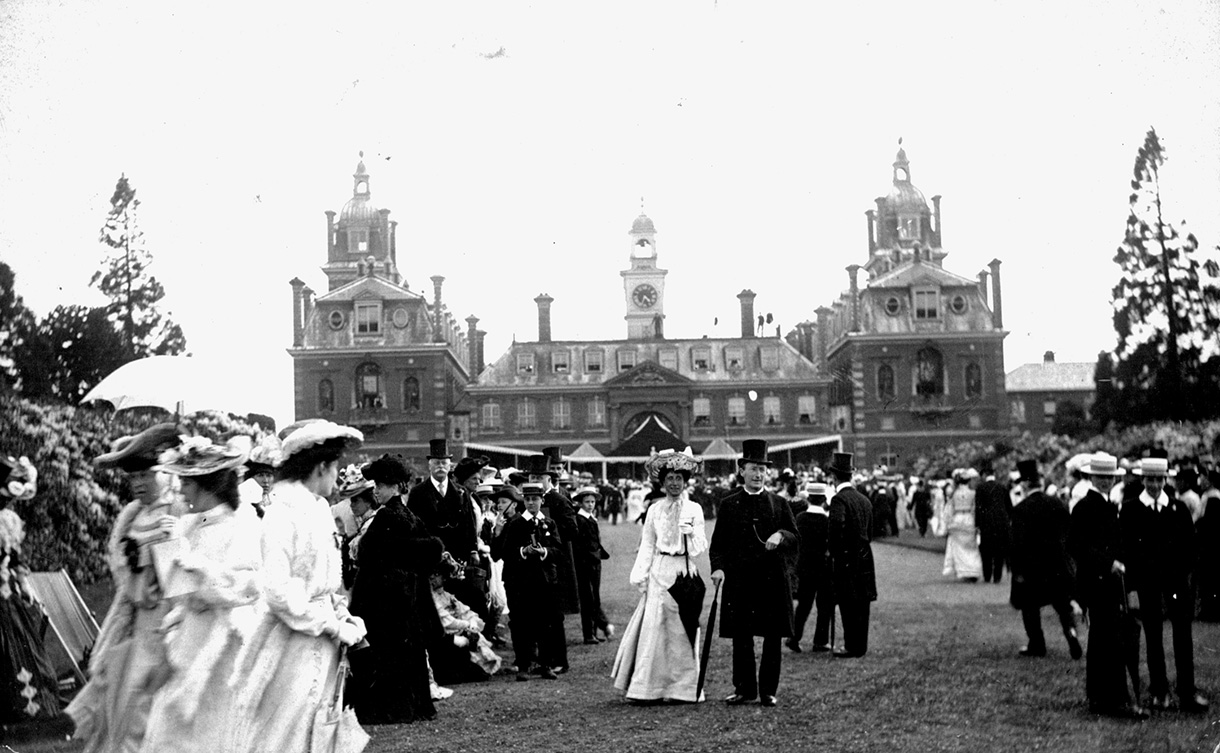
During this era, parents and honoured guests would be served lunch in Waterloo Hall and Great School before the prize-giving took place in the Gymnasium (now Old Gym). This was followed by tea in the form of a garden party for up to 2000 guests on Turf, ‘where tea and fruit were dispensed from numerous tents.’ The VIP visitors were served tea in the Master’s garden.
On their first two visits, the King and Queen did not attend for the whole day, but arrived in the late afternoon at Great Gate where they were received under ‘a pretty pavilion, in broad bands of the Wellington colours of pale blue and gold.’ The King presented the King’s Medal before touring the College. During his 1907 visit, Edward VII unveiled the South African War Memorial in Chapel, opened the new Dining Hall, and presented the Toye Challenge Trophy for the first time.
The events of 1909 were the most brilliant of all, marking the College’s 50th anniversary. Speech Day was postponed to July at the King’s request, to ensure his attendance. This time the royal party had lunch in Waterloo Hall, then known as the ‘Royal Room’, and attended the entire prize-giving ceremony. Bertram Pollock’s notes show that he considered every detail, including making sure the King was served his favourite drink, and hiring in equipment and waiting staff from Harrods.
Speech Day was cancelled four times during Pollock’s sixteen years as Master, due to the deaths of two monarchs (Queen Victoria and Edward VII) and two College Vice-Presidents. However, those Speech Days which were held reached heights of elaborateness and splendour not seen again until the 21st century.
